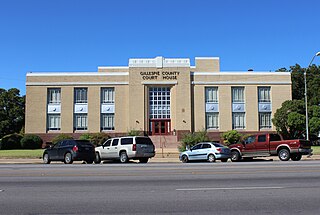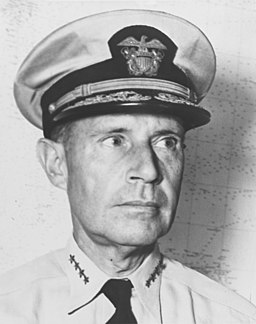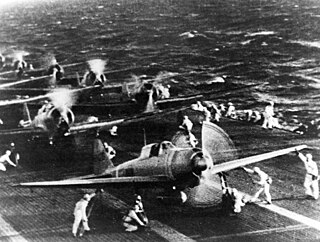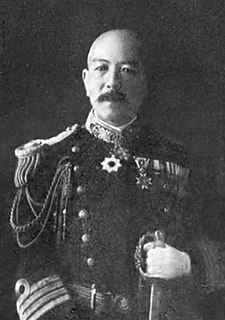
Chester William Nimitz, Sr. was a fleet admiral of the United States Navy. He played a major role in the naval history of World War II as Commander in Chief, U.S. Pacific Fleet and Commander in Chief, Pacific Ocean Areas, commanding Allied air, land, and sea forces during World War II.

Gillespie County is a county located on the Edwards Plateau in the U.S. state of Texas. As of the 2010 census, its population was 24,837. The county seat is Fredericksburg. It is located in the heart of the Texas Hill Country. Gillespie is named for Robert Addison Gillespie, a soldier in the Mexican–American War.

Marshal-Admiral The Marquis Tōgō Heihachirō, OM, GCVO, was a gensui or admiral of the fleet in the Imperial Japanese Navy and one of Japan's greatest naval heroes. As Commander-in-Chief of the Combined Fleet during the Russo-Japanese War he successfully confined the Russian Pacific Fleet to Port Arthur before winning a decisive victory over a relieving fleet at Tsushima. Tōgō was termed by Western journalists as "the Nelson of the East".

Kagoshima Prefecture is a prefecture of Japan located on the island of Kyushu. The capital is the city of Kagoshima.

Raymond Ames Spruance was a United States Navy admiral in World War II. He commanded U.S. naval forces during two of the most significant naval battles that took place in the Pacific Theatre: the Battle of Midway and the Battle of the Philippine Sea. At Midway, Spruance scored the first major victory for the United States over Japan; most historians consider Midway the turning point of the Pacific War.

Mikasa (三笠) is a pre-dreadnought battleship built for the Imperial Japanese Navy (IJN) in the late 1890s. Named after Mount Mikasa in Nara, Japan, the ship served as the flagship of Admiral Tōgō Heihachirō throughout the Russo-Japanese War of 1904–1905, including the Battle of Port Arthur on the second day of the war and the Battles of the Yellow Sea and Tsushima. Days after the end of the war, Mikasa's magazine accidentally exploded and sank the ship. She was salvaged and her repairs took over two years to complete. Afterwards, the ship served as a coast-defence ship during World War I and supported Japanese forces during the Siberian Intervention in the Russian Civil War.

Nikolai Ivanovich Nebogatov (Russian: Николай Иванович Небогатов occasionally transliterated as Nebogatoff, was a rear admiral in the Imperial Russian Navy, noted for his role in the final stages of the Russo-Japanese War of 1904–1905.

The HA. 19 is a historic Imperial Japanese Navy Type A Kō-hyōteki-class midget submarine that was part of the Japanese attack on Pearl Harbor on 7 December 1941. This submarine was ordered to enter Pearl Harbor then attack the American warships with its torpedoes and then be scuttled with explosives next to a warship. However, she did not enter the harbor, and was grounded and captured. The submarine was eventually put on display near the submarine squadron at Naval Station Key West, Florida, then moved to the nearby Key West Lighthouse and Military Museum. HA. 19 is now displayed at the National Museum of the Pacific War in Fredericksburg, Texas.

The Pacific Ocean theater, during World War II, was a major theater of the war between the Allies and the Empire of Japan. It was defined by the Allied powers' Pacific Ocean Area command, which included most of the Pacific Ocean and its islands, while mainland Asia was excluded, as were the Philippines, the Dutch East Indies, Borneo, Australia, most of the Territory of New Guinea and the western part of the Solomon Islands.

Maizuru Naval District was one of four main administrative districts of the pre-war Imperial Japanese Navy. Its territory included the entire Sea of Japan coastline from northern Kyūshū to western Hokkaidō.

The Landings on Rendova was a military amphibious assault on Rendova Island in the Solomon Islands on 30 June 1943 by United States Army and Navy forces during the New Georgia Campaign of the Pacific War. In the assault, U.S. forces overwhelmed a small Japanese military garrison and secured the island. The U.S. occupied the island to use it as a staging and artillery base to support an offensive against Japanese forces guarding an airfield at Munda Point on nearby New Georgia.

Baron Misu Sotarō was an admiral in the early Imperial Japanese Navy.

The Homesite of John O. Meusebach is located at Loyal Valley in Mason County, Texas, 21 miles (34 km) north of Fredericksburg and 18 miles (29 km) southeast of the city of Mason, on U.S. Highway 87 to right-of-way at the intersection of US 87 and RM 2242. Meusebach moved to the property in 1869, after a tornado destroyed his family home in Comal County.
Charles Henry Nimitz was born in Bremen, Germany, the son of a merchant seaman. He also went to sea before the Nimitz family immigrated to South Carolina in the early 1840s, and later became part of the Adelsverein colonization experiment in the newly annexed state of Texas. He was the grandfather of, and role model for, Fleet Admiral Chester Nimitz. In 1852, he built the Nimitz Hotel in Fredericksburg, Texas in the United States. The hotel he built now houses the National Museum of the Pacific War. The Nimitz Hotel was designated a Recorded Texas Historic Landmark in 1989, Marker number 10089. Nimitz was elected to the Twenty-second Texas Legislature in 1890, representing Gillespie, Comal and Blanco counties, which constituted District 89.

Baron Hidaka Sōnojō was an admiral of the early modern Imperial Japanese Navy, known primarily for his role in the First Sino-Japanese War.
Rear Admiral John Hubbard was an officer in the United States Navy. He fought in the Spanish–American War, played a prominent role in the independence of Panama from Colombia in 1903, and served as Commander-in-Chief of the United States Asiatic Fleet.

Nagata Yasujirō was a vice admiral in the Imperial Japanese Navy.




















